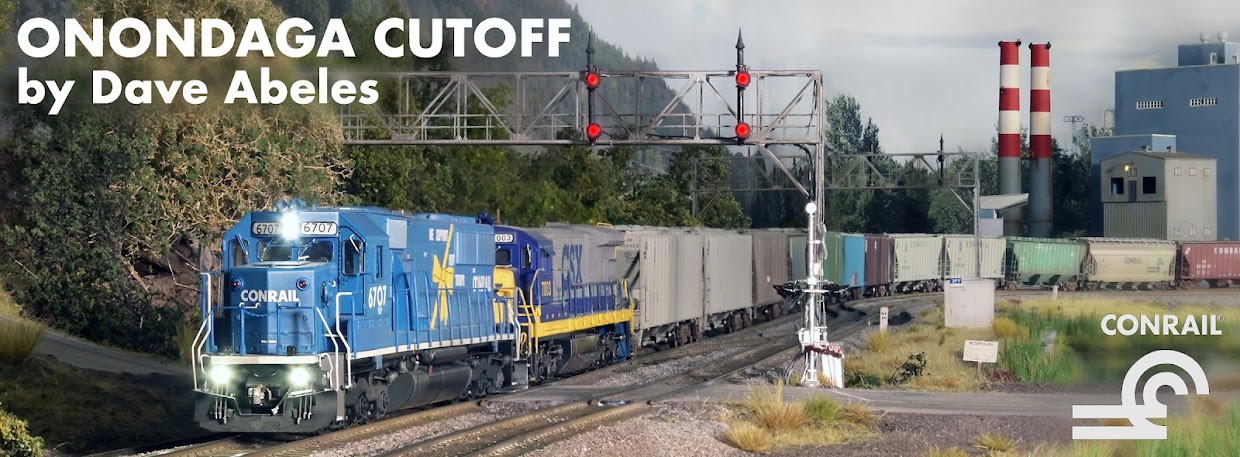I purchased the North Coast Engineering (NCE) Power Pro 5-amp DCC system, with an add-on booster unit, and with the radio-control option. This allows me to carry around the 'cab' without having to plug in any additional wires or cables while I operate. On a big, walk-around layout, this is a huge advantage, and makes things much more fun even at this stage - when I have just one locomotive wired for DCC with the decoder.
The first 'operation' on the DCC railroad was a simple local working Onondaga Yard - the symbols for this will be WAON-3 (the symbol that works east of the yard, down to the online industries) and WAON-10, which will be the yard job and work the propane distributor in the yard as well as any duties around the yard. So, therefore, my first train was WAON-10, with Conrail 3305 doing the honors:
This location is a solid 20 feet from the command control units themselves, and so would have required plenty of wiring on top of all that I have done already to install plug-in locations necessary to operate this with a tethered cab. Instead, I stood with cab in hand, and was free to walk around as needed. FUN.
Some significant work was required to realign my bus wires, the heavy-gage cables that run below the tracks, for DCC. All my power bus cables are routed into terminal strips that represent power districts, and each of those then is fed through a special breaker unit that NCE manufactures, and then to the command station itself, via another terminal strip. It sounds complicated but it is well explained in the manual and when you stop and think about it, it is very linear and makes logical sense too.
System overview:
The command station is the black box to the right, then to the left is the booster unit. Below and to the left is the breaker panel, and above that are various terminal strips required to keep things organized. The yellow cables in front of the breaker panel are the programming track busses (more on that later).
Here is a shot showing the NCE system itself - the command station (right) and the booster unit (left). NCE's system actually has a booster contained in the command station, so I have two boosters, which is what is needed to run a layout of this size.
Once I install decoders in my locomotives, or need to reconfigure them or program a new locomotive, I use a 'program track' which is separate from the layout itself. This track does not get enough power to run a locomotive, just enough to test a decoder installation and program the address and lighting, momentum, starting voltage, etc etc into each decoder. It worked perfectly for me, according to the directions, on the first try.
I also hooked up my old analog DC (regular cab control, not digital) transfomer to this track, via a double-pole, double-throw switch. I can use this to test the first wiring of a decoder on low voltage, separate from the DCC system, to at least make sure there are no shorts immediately.
Now, it's time to wire up more locomotives, including installing headlights where appropriate. It feels like a weight has been lifted off my shoulders - this has been a long time coming!






Wow. I can't wait to come play trains at your house!!
ReplyDeleteThank you sir; I cannot wait for your visit to do that! :-)
ReplyDelete